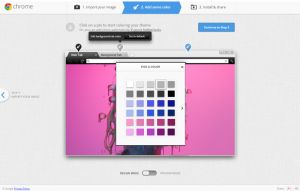 How to remove extensions from your browsers
How to remove extensions from your browsers
Even if most modern browsers support various types of extensions, having a lot of them installed might not be such a good idea. While multiple extensions can provide useful features, they will make your browser much slower, and there are some applications that will automatically install their own add-ons without you even noticing it. This guide will show you how to uninstall unused or unwanted extensions from all the popular browsers, as each of them has tits own way of doing it, even if they seem quite similar
Google Chrome
Google Chrome, as well as any other browser that uses the Chromium engine to render web pages, comes with a simple way to remove unwanted extensions. First, click on the "menu button" in the top-right side of the interface, go to "More tools" and click on the "Extensions" menu item to display the window that will show you all the extensions you have installed in Chrome. You can also open this page by typing "chrome://extensions" in the address bar.
Chrome Menu
Once the window with the list containing all the installed extensions has been loaded, simply browse your addons, select the ones you want to remove and click on the delete icon next to them. Select "OK" in the confirmation window that will appear to remove it, and that's about it. It is quite a simple process.
If you want simply disable a specific extension instead of completely removing it, you can do that by clicking on the "Enabled" check box.
Remove extension
Mozilla Firefox
Similar to Chrome, in order to start removing the add-ons from Mozilla Firefox, you will have to click on the menu icon from the top-right side of the interface and select the "Add-ons" item to bring up the extensions window.
Firefox Menu
Afterwards, click on the "Extensions" tab, locate the addon you want to delete and simply click on the "Remove" button. Additionally, you can disable browser extensions instead of removing them by clicking the "Disable" button right next to "Remove".
Remove extension
Keep in mind that some applications might automatically reinstall removed add-ons, so, disabling some of them might prove to be a better solution in those cases when you don't want to uninstall the program that added them in the first place.
Internet Explorer
Removing toolbars and other extensions in Internet Explorer might not be a process as simple, but it is also nothing to be scared of. To do that, you will have to access the add-on management tool, which can be easily accessed by selecting the "Manage add-ons" entry from the "Tools" menu.
Internet Explorer Menu
After you have accessed the add-on management utility, you might want to display all the installed add-ons and toolbars by selecting the "All add-ons" from the drop-down menu located on the left side of the interface (see image).
Show all add-ons
Now that you have displayed all the installed add-ons and toolbars, it is time to remove the unwanted ones. Sadly, Internet Explorer doesn't come with an extension removal feature, but you can easily disable them by clicking on the "Disable" button on the bottom-right side of the window. Although, if you really want to completely remove an add-on or a toolbar, you can either uninstall the application that added it in the first place or access the "Add/Remove program" utility from the Control Panel, search for the item and remove it from there.
Opera
Just like with any other browser, in order to remove an extension from Opera, you will first have to access the extension management window. To achieve that, simply click on the "Menu" icon from the top-left side of the browser window, go to the "Extensions" item and click on the "Extensions manager" to launch the tool. You can also press "Ctrl+Shift+E" to directly access it.
Opera Menu
Now all you have to do is locate the desired add-on you want remove and click on the small "x" next to it or disable it by pressing the "Disable" button. Simple, isn't it?
Opera extension manager
Safari
Last, but not least, it is time to show you how to remove add-ons from Safari. It doesn't really matter if you're on a Mac or if you are using an older version of Safari for Windows, because the process is pretty much the same. First, click on the "Safari" icon and access the "Preferences" menu. You might be tempted to click on the "Safari Extensions" menu item, but doing that will only get you to the Apple’s Safari Extensions Gallery website where you can download additional extensions.
Safari Preferences
In "Preferences" locate and click on the "Extensions" tab, find the desired add-on and simply press the "Uninstall" button. Also, just like with other browsers, you can enable or disable the extensions instead of deleting them by checking the "Enable" box next to each one.
Conclusion
As you can see, removing extensions and other installed items from popular web browsers is not that difficult. Since Microsoft's new browser, Edge, doesn't offer support for add-ons just yet, there is no point adding it to the list, even if it's becoming quite popular among users. If you are using other browsers beside the ones I've presented to you, removing extensions from them should also be a simple task. It's only a matter of locating the "preferences", "add-on" or "extensions" settings and deleting or disabling the desired items.
If you have any additional questions or suggestions, feel free to leave me a comment in the section below.






I would regard these extensions as the most useful:
1) Like everyone said an Ad Blocker, I like ABP only because it was the first one I've used and never run into any issue.
2) Disconnect, it will block any Analytics, Advertisement, or Social features within a webpage.
3) I would change Pocket for Google Keep. My logic behind it, is if people are using chrome, they probably are using a google account. Google Keep is a note keeping, tracking and filtering made by Google. It can be accessed via Web, Android or iPhone and with the extension all it takes is a click and it will add your page as a note into it.
Victoria Tegg, how do I remove Xmarks extension from the EPIC browser?